| 1.
|
Biao Tang, Yanni Xiao, Jianhong Wu,
A piecewise model of virus-immune system with two thresholds,
2016,
278,
00255564,
63,
10.1016/j.mbs.2016.06.003
|
|
| 2.
|
Aili Wang, Yanni Xiao, Robert A. Cheke,
Global dynamics of a piece-wise epidemic model with switching vaccination strategy,
2014,
19,
1553-524X,
2915,
10.3934/dcdsb.2014.19.2915
|
|
| 3.
|
Rui Mu, Youping Yang,
Global Dynamics of an Avian Influenza A(H7N9) Epidemic Model with Latent Period and Nonlinear Recovery Rate,
2018,
2018,
1748-670X,
1,
10.1155/2018/7321694
|
|
| 4.
|
Yu Zhao, Liping Zhang, Sanling Yuan,
The effect of media coverage on threshold dynamics for a stochastic SIS epidemic model,
2018,
512,
03784371,
248,
10.1016/j.physa.2018.08.113
|
|
| 5.
|
Yanni Xiao, Yunhu Zhang, Min Gao,
Modeling hantavirus infections in mainland China,
2019,
360,
00963003,
28,
10.1016/j.amc.2019.05.009
|
|
| 6.
|
Weike Zhou, Yanni Xiao, Robert A. Cheke,
A threshold policy to interrupt transmission of West Nile Virus to birds,
2016,
40,
0307904X,
8794,
10.1016/j.apm.2016.05.040
|
|
| 7.
|
Govind Prasad Sahu, Joydip Dhar,
Dynamics of an SEQIHRS epidemic model with media coverage, quarantine and isolation in a community with pre-existing immunity,
2015,
421,
0022247X,
1651,
10.1016/j.jmaa.2014.08.019
|
|
| 8.
|
Rashid Jan, Muhammad Altaf Khan, Poom Kumam, Phatiphat Thounthong,
Modeling the transmission of dengue infection through fractional derivatives,
2019,
127,
09600779,
189,
10.1016/j.chaos.2019.07.002
|
|
| 9.
|
Yunhwan Kim, Ana Vivas Barber, Sunmi Lee, Roberto Barrio,
Modeling influenza transmission dynamics with media coverage data of the 2009 H1N1 outbreak in Korea,
2020,
15,
1932-6203,
e0232580,
10.1371/journal.pone.0232580
|
|
| 10.
|
Maoxing Liu, Eduardo Liz, Gergely Röst,
Endemic Bubbles Generated by Delayed Behavioral Response: Global Stability and Bifurcation Switches in an SIS Model,
2015,
75,
0036-1399,
75,
10.1137/140972652
|
|
| 11.
|
Huitao Zhao, Yiping Lin, Yunxian Dai,
An SIRS Epidemic Model Incorporating Media Coverage with Time Delay,
2014,
2014,
1748-670X,
1,
10.1155/2014/680743
|
|
| 12.
|
Pengfei Song, Yanni Xiao,
Analysis of an Epidemic System with Two Response Delays in Media Impact Function,
2019,
81,
0092-8240,
1582,
10.1007/s11538-019-00586-0
|
|
| 13.
|
Weiming Wang, Yun Kang, Yongli Cai,
Global stability of the steady states of an epidemic model incorporating intervention strategies,
2017,
14,
1551-0018,
1071,
10.3934/mbe.2017056
|
|
| 14.
|
Rashid Jan, Yanni Xiao,
Effect of partial immunity on transmission dynamics of dengue disease with optimal control,
2019,
42,
0170-4214,
1967,
10.1002/mma.5491
|
|
| 15.
|
Yan Zhang, Kuangang Fan, Shujing Gao, Yingfen Liu, Shihua Chen,
Ergodic stationary distribution of a stochastic SIRS epidemic model incorporating media coverage and saturated incidence rate,
2019,
514,
03784371,
671,
10.1016/j.physa.2018.09.124
|
|
| 16.
|
Weike Zhou, Yanni Xiao, Jane M Heffernan,
A two-thresholds policy to interrupt transmission of West Nile Virus to birds,
2019,
463,
00225193,
22,
10.1016/j.jtbi.2018.12.013
|
|
| 17.
|
Yanlin Ding, Xinzhi Ren, Cuicui Jiang, Qianhong Zhang,
PERIODIC SOLUTION OF A STOCHASTIC SIQR EPIDEMIC MODEL INCORPORATING MEDIA COVERAGE,
2020,
10,
2156-907X,
2439,
10.11948/20190333
|
|
| 18.
|
Mingwang Shen, Yanni Xiao, Libin Rong,
Modeling the effect of comprehensive interventions on Ebola virus transmission,
2015,
5,
2045-2322,
10.1038/srep15818
|
|
| 19.
|
Qian Li, Yanni Xiao,
Global Dynamics of a Virus-Immune System with Virus-Guided Therapy and Saturation Growth of Virus,
2018,
2018,
1024-123X,
1,
10.1155/2018/4710586
|
|
| 20.
|
Reza Memarbashi, Elahe Sorouri,
Modeling the effect of information transmission on the drug dynamic,
2020,
135,
2190-5444,
10.1140/epjp/s13360-019-00064-5
|
|
| 21.
|
Liyan Wang, Huilin Huang, Ancha Xu, Weiming Wang,
Stochastic Extinction in an SIRS Epidemic Model Incorporating Media Coverage,
2013,
2013,
1085-3375,
1,
10.1155/2013/891765
|
|
| 22.
|
Wenbin Liu, Qiben Zheng,
A stochastic SIS epidemic model incorporating media coverage in a two patch setting,
2015,
262,
00963003,
160,
10.1016/j.amc.2015.04.025
|
|
| 23.
|
Rui Mu, Airong Wei, Youping Yang,
Global dynamics and sliding motion in A(H7N9) epidemic models with limited resources and Filippov control,
2019,
477,
0022247X,
1296,
10.1016/j.jmaa.2019.05.013
|
|
| 24.
|
Wenbin Liu,
A SIRS Epidemic Model Incorporating Media Coverage with Random Perturbation,
2013,
2013,
1085-3375,
1,
10.1155/2013/792308
|
|
| 25.
|
Yingying Zhang, Yicang Zhou, Biao Tang,
Canard Phenomenon in an SIRS Epidemic Model with Nonlinear Incidence Rate,
2020,
30,
0218-1274,
2050073,
10.1142/S021812742050073X
|
|
| 26.
|
Yongli Cai, Yun Kang, Malay Banerjee, Weiming Wang,
A stochastic SIRS epidemic model with infectious force under intervention strategies,
2015,
259,
00220396,
7463,
10.1016/j.jde.2015.08.024
|
|
| 27.
|
Guihua Li, Yijing Dong,
Dynamic modelling of the impact of public health education on the control of emerging infectious disease,
2019,
13,
1751-3758,
502,
10.1080/17513758.2019.1639835
|
|
| 28.
|
Daniel L. Mendoza, Martin P. Buchert, Tabitha M. Benney, John C. Lin,
The Association of Media and Environmental Variables with Transit Ridership,
2020,
2,
2624-8921,
507,
10.3390/vehicles2030028
|
|
| 29.
|
Badr-eddine Berrhazi, Mohamed El Fatini, Aziz Laaribi, Roger Pettersson, Regragui Taki,
A stochastic SIRS epidemic model incorporating media coverage and driven by Lévy noise,
2017,
105,
09600779,
60,
10.1016/j.chaos.2017.10.007
|
|
| 30.
|
Yanni Xiao, Changcheng Xiang, Robert A. Cheke, Sanyi Tang,
Coupling the Macroscale to the Microscale in a Spatiotemporal Context to Examine Effects of Spatial Diffusion on Disease Transmission,
2020,
82,
0092-8240,
10.1007/s11538-020-00736-9
|
|
| 31.
|
J. Sooknanan, D. M. G. Comissiong,
Trending on Social Media: Integrating Social Media into Infectious Disease Dynamics,
2020,
82,
0092-8240,
10.1007/s11538-020-00757-4
|
|
| 32.
|
Hai-Feng Huo, Xiang-Ming Zhang,
Modeling the influence of Twitter in reducing and increasing the spread of influenza epidemics,
2016,
5,
2193-1801,
10.1186/s40064-016-1689-4
|
|
| 33.
|
Qian Li, Yanni Xiao,
Bifurcation analyses and hormetic effects of a discrete-time tumor model,
2019,
363,
00963003,
124618,
10.1016/j.amc.2019.124618
|
|
| 34.
|
Nyuk Sian Chong, Robert J. Smith?,
Modeling avian influenza using Filippov systems to determine culling of infected birds and quarantine,
2015,
24,
14681218,
196,
10.1016/j.nonrwa.2015.02.007
|
|
| 35.
|
Qian Li, Yanni Xiao,
Dynamical Behavior and Bifurcation Analysis of the SIR Model with Continuous Treatment and State-Dependent Impulsive Control,
2019,
29,
0218-1274,
1950131,
10.1142/S0218127419501311
|
|
| 36.
|
Yunhu Zhang, Yanni Xiao,
Modeling and analyzing the effects of fixed‐time intervention on transmission dynamics of echinococcosis in Qinghai province,
2021,
44,
0170-4214,
4276,
10.1002/mma.7029
|
|
| 37.
|
Mingju Ma, Sanyang Liu, Jun Li,
Does media coverage influence the spread of drug addiction?,
2017,
50,
10075704,
169,
10.1016/j.cnsns.2017.03.002
|
|
| 38.
|
Sanyi Tang, Guangyao Tang, Wenjie Qin,
Codimension-1 Sliding Bifurcations of a Filippov Pest Growth Model with Threshold Policy,
2014,
24,
0218-1274,
1450122,
10.1142/S0218127414501223
|
|
| 39.
|
Juan Liu,
Bifurcation of a Delayed SEIS Epidemic Model with a Changing Delitescence and Nonlinear Incidence Rate,
2017,
2017,
1026-0226,
1,
10.1155/2017/2340549
|
|
| 40.
|
Biao Tang, Yanni Xiao, Sivabal Sivaloganathan, Jianhong Wu,
A piecewise model of virus-immune system with effector cell-guided therapy,
2017,
47,
0307904X,
227,
10.1016/j.apm.2017.03.023
|
|
| 41.
|
Aili Wang, Yanni Xiao, Robert Smith,
Using non-smooth models to determine thresholds for microbial pest management,
2019,
78,
0303-6812,
1389,
10.1007/s00285-018-1313-z
|
|
| 42.
|
Nyuk Sian Chong, Benoit Dionne, Robert Smith,
An avian-only Filippov model incorporating culling of both susceptible and infected birds in combating avian influenza,
2016,
73,
0303-6812,
751,
10.1007/s00285-016-0971-y
|
|
| 43.
|
Sanaa Moussa Salman,
Memory and media coverage effect on an HIV/AIDS epidemic model with treatment,
2021,
385,
03770427,
113203,
10.1016/j.cam.2020.113203
|
|
| 44.
|
Daipeng Chen, Yanni Xiao, Sanyi Tang,
Air quality index induced nonsmooth system for respiratory infection,
2019,
460,
00225193,
160,
10.1016/j.jtbi.2018.10.016
|
|
| 45.
|
Aili Wang, Yanni Xiao, Robert Smith,
Dynamics of a non-smooth epidemic model with three thresholds,
2020,
139,
1431-7613,
47,
10.1007/s12064-019-00297-z
|
|
| 46.
|
Yunhu Zhang, Yanni Xiao,
Global dynamics for a Filippov epidemic system with imperfect vaccination,
2020,
38,
1751570X,
100932,
10.1016/j.nahs.2020.100932
|
|
| 47.
|
Huitao Zhao, Miaochan Zhao,
Global Hopf bifurcation analysis of an susceptible-infective-removed epidemic model incorporating media coverage with time delay,
2017,
11,
1751-3758,
8,
10.1080/17513758.2016.1229050
|
|
| 48.
|
Yanni Xiao, Sanyi Tang, Jianhong Wu,
Media impact switching surface during an infectious disease outbreak,
2015,
5,
2045-2322,
10.1038/srep07838
|
|
| 49.
|
Qinling Yan, Sanyi Tang, Sandra Gabriele, Jianhong Wu,
Media coverage and hospital notifications: Correlation analysis and optimal media impact duration to manage a pandemic,
2016,
390,
00225193,
1,
10.1016/j.jtbi.2015.11.002
|
|
| 50.
|
Tailei Zhang, Ruini Kang, Kai Wang, Junli Liu,
Global dynamics of an SEIR epidemic model with discontinuous treatment,
2015,
2015,
1687-1847,
10.1186/s13662-015-0695-0
|
|
| 51.
|
Anuj Kumar, Prashant K. Srivastava, Yasuhiro Takeuchi,
Modeling the role of information and limited optimal treatment on disease prevalence,
2017,
414,
00225193,
103,
10.1016/j.jtbi.2016.11.016
|
|
| 52.
|
Xuejuan Lu, Shaokai Wang, Shengqiang Liu, Jia Li,
An SEI infection model incorporating media impact,
2017,
14,
1551-0018,
1317,
10.3934/mbe.2017068
|
|
| 53.
|
Xiaodan Sun, Yanni Xiao,
Multiscale System for Environmentally-Driven Infectious Disease with Threshold Control Strategy,
2018,
28,
0218-1274,
1850064,
10.1142/S0218127418500645
|
|
| 54.
|
Sylvie Diane Djiomba Njankou, Farai Nyabadza,
Modelling the Potential Role of Media Campaigns in Ebola Transmission Dynamics,
2017,
2017,
1687-9643,
1,
10.1155/2017/3758269
|
|
| 55.
|
Xia Wang, Yuying Wang,
Novel dynamics of a predator–prey system with harvesting of the predator guided by its population,
2017,
42,
0307904X,
636,
10.1016/j.apm.2016.10.006
|
|
| 56.
|
Maoxing Liu, Yuting Chang, Lixia Zuo,
Modelling the Impact of Media in Controlling the Diseases with a Piecewise Transmission Rate,
2016,
2016,
1026-0226,
1,
10.1155/2016/3458965
|
|
| 57.
|
Hebai Chen, Lan Zou,
How to control the immigration of infectious individuals for a region?,
2019,
45,
14681218,
491,
10.1016/j.nonrwa.2018.07.018
|
|
| 58.
|
Rashid Jan, Muhammad Altaf Khan, J.F. Gómez‐Aguilar,
Asymptomatic carriers in transmission dynamics of dengue with control interventions,
2020,
41,
0143-2087,
430,
10.1002/oca.2551
|
|
| 59.
|
Xiaodan Sun, Yingping Li, Yanni Xiao,
A Predator–Prey Model with Prey Population Guided Anti-Predator Behavior,
2017,
27,
0218-1274,
1750099,
10.1142/S0218127417500997
|
|
| 60.
|
Badr-Eddine Berrhazi, Mohamed El Fatini, Roger Pettersson, Aziz Laaribi,
Media effects on the dynamics of a stochastic SIRI epidemic model with relapse and Lévy noise perturbation,
2019,
12,
1793-5245,
1950037,
10.1142/S1793524519500372
|
|
| 61.
|
Weike Zhou, Yanni Xiao, Jane Marie Heffernan, Enrique Castro-Sánchez,
Optimal media reporting intensity on mitigating spread of an emerging infectious disease,
2019,
14,
1932-6203,
e0213898,
10.1371/journal.pone.0213898
|
|
| 62.
|
Miaochan Zhao, Huitao Zhao,
Asymptotic behavior of global positive solution to a stochastic SIR model incorporating media coverage,
2016,
2016,
1687-1847,
10.1186/s13662-016-0884-5
|
|
| 63.
|
Shuang-Hong Ma, Hai-Feng Huo, Xin-You Meng,
Modelling Alcoholism as a Contagious Disease: A Mathematical Model with Awareness Programs and Time Delay,
2015,
2015,
1026-0226,
1,
10.1155/2015/260195
|
|
| 64.
|
Tanuja Das, Prashant K. Srivastava, Anuj Kumar,
Nonlinear dynamical behavior of an SEIR mathematical model: Effect of information and saturated treatment,
2021,
31,
1054-1500,
043104,
10.1063/5.0039048
|
|
| 65.
|
Jiawei Deng, Sanyi Tang, Hongying Shu,
Joint impacts of media, vaccination and treatment on an epidemic Filippov model with application to COVID-19,
2021,
523,
00225193,
110698,
10.1016/j.jtbi.2021.110698
|
|
| 66.
|
Yiping Tan, Yongli Cai, Xiaoqin Wang, Zhihang Peng, Kai Wang, Ruoxia Yao, Weiming Wang,
Stochastic dynamics of an SIS epidemiological model with media coverage,
2023,
204,
03784754,
1,
10.1016/j.matcom.2022.08.001
|
|
| 67.
|
Sarita Bugalia, Jai Prakash Tripathi, Hao Wang,
Mathematical modeling of intervention and low medical resource availability with delays: Applications to COVID-19 outbreaks in Spain and Italy,
2021,
18,
1551-0018,
5865,
10.3934/mbe.2021295
|
|
| 68.
|
Tangjuan Li, Yanni Xiao,
Linking the disease transmission to information dissemination dynamics: An insight from a multi-scale model study,
2021,
526,
00225193,
110796,
10.1016/j.jtbi.2021.110796
|
|
| 69.
|
H. M. Srivastava, Rashid Jan, Asif Jan, Wejdan Deebani, Meshal Shutaywi,
Fractional-calculus analysis of the transmission dynamics of the dengue infection,
2021,
31,
1054-1500,
053130,
10.1063/5.0050452
|
|
| 70.
|
Dongshu Wang, Shifan Luo, Wenxiu Li,
Global Dynamic Analysis of a Discontinuous Infectious Disease System with Two Thresholds,
2022,
32,
0218-1274,
10.1142/S0218127422502157
|
|
| 71.
|
Tingting Ding, Tongqian Zhang,
Asymptotic behavior of the solutions for a stochastic SIRS model with information intervention,
2022,
19,
1551-0018,
6940,
10.3934/mbe.2022327
|
|
| 72.
|
Xinghua Chang, Jianrong Wang, Maoxing Liu, Zhen Jin, Dun Han,
Study on an SIHRS Model of COVID-19 Pandemic With Impulse and Time Delay Under Media Coverage,
2021,
9,
2169-3536,
49387,
10.1109/ACCESS.2021.3064632
|
|
| 73.
|
Meltem GÖLGELİ,
The contagion dynamics of vaccine skepticism,
2022,
2651-477X,
1,
10.15672/hujms.957653
|
|
| 74.
|
Danfeng Pang, Yanni Xiao, Xiao-Qiang Zhao,
A cross-infection model with diffusive environmental bacteria,
2022,
505,
0022247X,
125637,
10.1016/j.jmaa.2021.125637
|
|
| 75.
|
Biao Tang, Qian Li, Yanni Xiao, Sivabal Sivaloganathan,
A novel hybrid model of tumor control, combining pulse surveillance with tumor size-guided therapies,
2022,
104,
0307904X,
259,
10.1016/j.apm.2021.11.025
|
|
| 76.
|
Rashid Jan, Adil Khurshaid, Hammad Alotaibi, Mustafa Inc,
A robust study of the transmission dynamics of syphilis infection through non-integer derivative,
2023,
8,
2473-6988,
6206,
10.3934/math.2023314
|
|
| 77.
|
Jianfeng Luo, Yi Zhao,
Simulation-Based Study of Biological Systems with Threshold Policy by a Differential Linear Complementarity System,
2021,
31,
0218-1274,
2130025,
10.1142/S0218127421300251
|
|
| 78.
|
Jiawei Deng, Sanyi Tang, Choi-Hong Lai,
Non-smooth ecological systems with a switching threshold depending on the pest density and its rate of change,
2021,
42,
1751570X,
101094,
10.1016/j.nahs.2021.101094
|
|
| 79.
|
Guangyi Cheng, Ning Wang, Longxing Qi,
Modeling the influence of health education on individual behavior in the process of disease transmission,
2022,
45,
0170-4214,
11498,
10.1002/mma.8463
|
|
| 80.
|
Guodong Li, Wenjie Li, Ying Zhang, Yajuan Guan,
Sliding dynamics and bifurcations of a human influenza system under logistic source and broken line control strategy,
2023,
20,
1551-0018,
6800,
10.3934/mbe.2023293
|
|
| 81.
|
Rashid Jan, Salah Boulaaras,
Analysis of fractional-order dynamics of dengue infection with non-linear incidence functions,
2022,
44,
0142-3312,
2630,
10.1177/01423312221085049
|
|
| 82.
|
Tangjuan Li, Yanni Xiao,
Complex dynamics of an epidemic model with saturated media coverage and recovery,
2022,
107,
0924-090X,
2995,
10.1007/s11071-021-07096-6
|
|
| 83.
|
Yuan-Shun Tan, Xiao-Xue Li, Jing Yang, R. A. Cheke,
Global stability of an age-structured model of smoking and its treatment,
2023,
16,
1793-5245,
10.1142/S1793524522500632
|
|
| 84.
|
Wenjie Qin, Xuewen Tan, Xiaotao Shi, Marco Tosato, Xinzhi Liu,
Sliding Dynamics and Bifurcations in the Extended Nonsmooth Filippov Ecosystem,
2021,
31,
0218-1274,
2150119,
10.1142/S0218127421501194
|
|
| 85.
|
Muhammad Bilal Ghori, Parvaiz Ahmad Naik, Jian Zu, Zohreh Eskandari, Mehraj‐ud‐din Naik,
Global dynamics and bifurcation analysis of a fractional‐order SEIR epidemic model with saturation incidence rate,
2022,
45,
0170-4214,
3665,
10.1002/mma.8010
|
|
| 86.
|
Salah Boulaaras, Rashid Jan, Amin Khan, Muhammad Ahsan,
Dynamical analysis of the transmission of dengue fever via Caputo-Fabrizio fractional derivative,
2022,
8,
25900544,
100072,
10.1016/j.csfx.2022.100072
|
|
| 87.
|
Jayanta Mondal, Subhas Khajanchi, Piu Samui,
Impact of media awareness in mitigating the spread of an infectious disease with application to optimal control,
2022,
137,
2190-5444,
10.1140/epjp/s13360-022-03156-x
|
|
| 88.
|
Rashid Jan, Zahir Shah, Wejdan Deebani, Ebraheem Alzahrani,
Analysis and dynamical behavior of a novel dengue model via fractional calculus,
2022,
15,
1793-5245,
10.1142/S179352452250036X
|
|
| 89.
|
Pengfei Song, Yanni Xiao,
Analysis of a diffusive epidemic system with spatial heterogeneity and lag effect of media impact,
2022,
85,
0303-6812,
10.1007/s00285-022-01780-w
|
|
| 90.
|
Biao Tang, Wuqiong Zhao,
Sliding Dynamics and Bifurcations of a Filippov System with Nonlinear Threshold Control,
2021,
31,
0218-1274,
10.1142/S021812742150214X
|
|
| 91.
|
ANSHIKA KAPOOR, ANIRUDDHA DEKA, SAMIT BHATTACHARYYA,
ROLE OF MEDIA COVERAGE IN MITIGATING AN EPIDEMIC OUTBREAK: AN OPTIMAL CONTROL MODEL,
2021,
29,
0218-3390,
871,
10.1142/S0218339021500212
|
|
| 92.
|
N. L. Semendyaeva, M. V. Orlov, Tang Rui, Yang Enping,
Analytical and Numerical Investigation of the SIR Mathematical Model,
2023,
1046-283X,
10.1007/s10598-023-09572-7
|
|
| 93.
|
Lisha Wang, Zhipeng Qiu, Takao Sasaki, Yun Kang,
Dynamical Behavior of a Colony Migration System: Do Colony Size and Quorum Threshold Affect Collective Decision?,
2023,
0036-1399,
S43,
10.1137/22M1478690
|
|
| 94.
|
Ning Wang, Longxing Qi, Merveil Bessane, Mingwei Hao,
Global Hopf bifurcation of a two-delay epidemic model with media coverage and asymptomatic infection,
2023,
369,
00220396,
1,
10.1016/j.jde.2023.05.036
|
|
| 95.
|
Pan Tang, Ning Wang, Tong Zhang, Longxing Qi,
Modeling the effect of health education and individual participation on the increase of sports population and optimal design,
2023,
20,
1551-0018,
12990,
10.3934/mbe.2023579
|
|
| 96.
|
Tongrui Zhang, Zhijie Zhang, Zhiyuan Yu, Qimin Huang, Daozhou Gao,
Effects of behaviour change on HFMD transmission,
2023,
17,
1751-3758,
10.1080/17513758.2023.2244968
|
|
| 97.
|
Lihua Dai, Xianning Liu, Yuming Chen,
Global dynamics of a fractional-order SIS epidemic model with media coverage,
2023,
0924-090X,
10.1007/s11071-023-08838-4
|
|
| 98.
|
Doaa M. Fawzy, A. Elsaid, W. K. Zahra, Ayman A. Arafa,
Qualitative analysis of a Filippov wild-sterile mosquito population model with immigration,
2023,
33,
1054-1500,
10.1063/5.0167157
|
|
| 99.
|
Wenjie Qin, Jiamin Zhang, Zhengjun Dong,
Media impact research: a discrete SIR epidemic model with threshold switching and nonlinear infection forces,
2023,
20,
1551-0018,
17783,
10.3934/mbe.2023790
|
|
| 100.
|
Abdulwasea Alkhazzan, Jungang Wang, Yufeng Nie, Hasib Khan, Jehad Alzabut,
An effective transport-related SVIR stochastic epidemic model with media coverage and Lévy noise,
2023,
175,
09600779,
113953,
10.1016/j.chaos.2023.113953
|
|
| 101.
|
秀 秦,
Dynamic Analysis of SEIRS-M Epidemic Mod-el with Media Effect Delay,
2023,
12,
2324-7991,
4338,
10.12677/AAM.2023.1210427
|
|
| 102.
|
Jie He, Zhenguo Bai,
Global Hopf bifurcation of a cholera model with media coverage,
2023,
20,
1551-0018,
18468,
10.3934/mbe.2023820
|
|
| 103.
|
M. Gabriela Navas-Zuloaga, Kaitlin M. Baudier, Jennifer H. Fewell, Noam Ben-Asher, Theodore P. Pavlic, Yun Kang,
A modeling framework for adaptive collective defense: crisis response in social-insect colonies,
2023,
87,
0303-6812,
10.1007/s00285-023-01995-5
|
|
| 104.
|
Danni Wang, Hongli Yang, Liangui Yang,
Research on nonlinear infectious disease models influenced by media factors and optimal control,
2024,
9,
2473-6988,
3505,
10.3934/math.2024172
|
|
| 105.
|
Michael O. Adeniyi, Asimi A. Amalare, Segun I. Oke, Sulyman O. Salawu,
Bifurcation analysis and global sensitivity index for malaria disease transmission dynamics: Information and treated bed nets control,
2024,
17,
1793-5245,
10.1142/S1793524523500602
|
|
| 106.
|
Yue Wu, Shenglong Chen, Ge Zhang, Zhiming Li,
Dynamic analysis of a stochastic vector-borne model with direct transmission and media coverage,
2024,
9,
2473-6988,
9128,
10.3934/math.2024444
|
|
| 107.
|
Aditya Pandey, Archana Singh Bhadauria, Vijai Shanker Verma, Rachana Pathak,
Effect of awareness and saturated treatment on the transmission of infectious diseases,
2024,
12,
2544-7297,
10.1515/cmb-2023-0119
|
|
| 108.
|
Dandan Sun, Wan-Tong Li, Ming-Zhen Xin,
Dynamics of an age-structured SIS epidemic model with local dispersal and general incidence functions,
2024,
10075704,
108364,
10.1016/j.cnsns.2024.108364
|
|
| 109.
|
Sayed Murad Ali Shah, Yufeng Nie, Abdulwasea Alkhazzan, Cemil Tunç, Anwarud Din,
A stochastic hepatitis B model with media coverage and Lévy noise,
2024,
18,
1658-3655,
10.1080/16583655.2024.2414523
|
|
| 110.
|
Jing Jia, Zhong Zhao, Jingen Yang, Anwar Zeb,
Dynamics of the drug efficacy of a threshold-triggered control strategy for antibiotic-resistant bacteria,
2025,
1598-5865,
10.1007/s12190-025-02426-y
|
|
| 111.
|
Burcu Gürbüz, Aytül Gökçe, Segun I. Oke, Michael O. Adeniyi, Mayowa M. Ojo,
Dynamical behavior and bifurcation analysis for a theoretical model of dengue fever transmission with incubation period and delayed recovery,
2025,
03784754,
10.1016/j.matcom.2025.03.008
|
|
| 112.
|
Xinghua Chang, Jianrong Wang, Maoxing Liu, Xue Yan,
An SIS infectious disease model with nonlinear incidence and disease awareness on complex networks,
2025,
196,
09600779,
116349,
10.1016/j.chaos.2025.116349
|
|
| 113.
|
Fatemeh Mirsaeedi, Mohammad Sheikhalishahi, Mehrdad Mohammadi, Dmitry Ivanov,
2025,
Chapter 12,
978-3-031-85507-8,
249,
10.1007/978-3-031-85508-5_12
|
|
| 114.
|
Muhammad Farman, Khadija Jamil, Kottakkaran Sooppy Nisar, Yasir Nadeem Anjam, Muhammad Umer Saleem, Evren Hincal,
Dynamic analysis and optimization of syphilis spread: Simulations, integrating treatment and public health interventions,
2025,
14,
2192-8029,
10.1515/nleng-2025-0100
|
|
| 115.
|
Wenjie Qin, Shan Zhang, Yi Yang, Jiamin Zhang,
A discrete SIR epidemic model incorporating media impact, resource limitaions and threshold switching strategies,
2025,
10,
24680427,
1270,
10.1016/j.idm.2025.07.006
|
|
| 116.
|
Cihan Cai, Jicai Huang, Yijun Lou, Min Lu, Wenzhong Shi, Hui Wan,
Coupled contagion dynamics of behavior and disease: A mechanistic learning model approach,
2025,
01,
3029-2867,
15,
10.1142/S3029286725500020
|
|












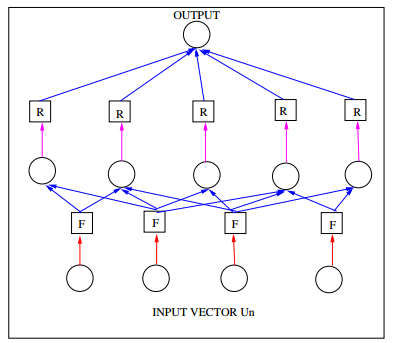
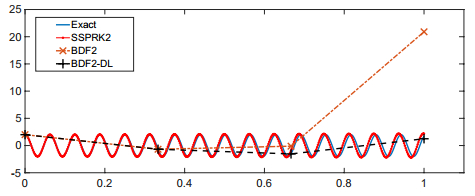

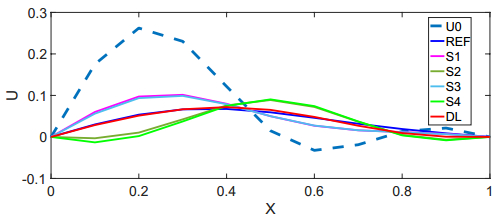

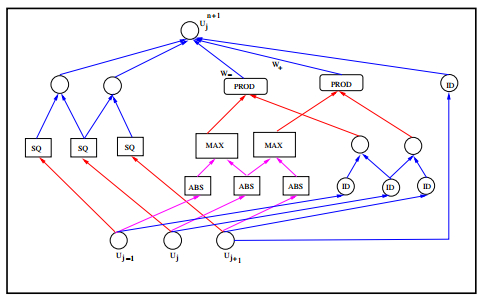
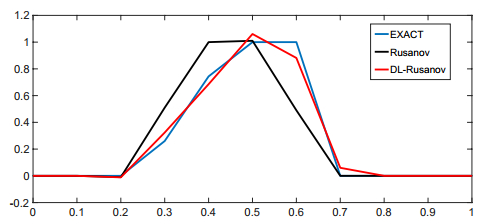



 DownLoad:
DownLoad: